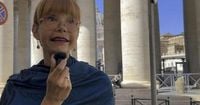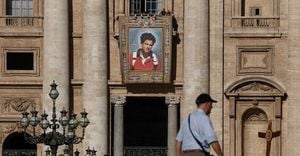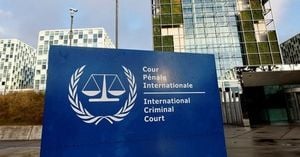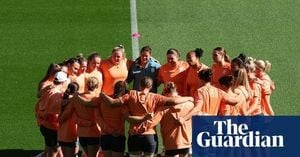Hundreds of Catholic faithful from LGBTQ+ communities around the globe converged on Rome this September, embarking on a pilgrimage that many described as both historic and deeply personal. Over the weekend of September 5-7, 2025, more than 1,200 LGBTQ+ Catholics gathered in the Eternal City to bear witness to their faith and to claim their place within a church that has long struggled with questions of inclusion and acceptance.
The event, dubbed the LGBTQ+ Pilgrimage of Hope for the Jubilee Year, was not officially listed among the Vatican’s scheduled jubilee celebrations for families, athletes, or even marching bands. Yet, as Jesuit Fr. James Martin pointed out in an interview with the National Catholic Reporter, “Every other group seemed to have a jubilee. During the conclave, there was a jubilee for marching bands. So if marching bands can have a jubilee, why not LGBTQ Catholics? They're certainly as much a part of the church.”
The pilgrimage began in earnest on September 6, when participants set out from Piazza Pia, near the Castel Sant’Angelo, and made their way along Via della Conciliazione to St. Peter’s Basilica. There, they would walk through the Jubilee’s Holy Door—an act steeped in spiritual symbolism, especially as the door is only opened during Jubilee years. The procession was the culmination of days of prayer, reflection, and storytelling, all aimed at making visible the faith and hope of LGBTQ+ Catholics worldwide.
But the journey to Rome was not merely metaphorical for everyone. On the eve of the main event, a smaller group of pilgrims completed a grueling nine-day trek, walking over 100 kilometers on the Via Francigena Sud from Terracina to Rome. This medieval route, which stretches 929 kilometers from Rome to Santa Maria di Leuca, has long been a path for those seeking spiritual renewal. For these modern-day pilgrims, the physical challenge was a testament to their commitment and a public declaration that LGBTQ+ Catholics are, as one participant put it, “Catholics of deep faith.” The Washington Post spoke with Innocenzo Pontillo, president of La Tenda di Gionata, the Italian LGBTQ+ Catholic association that organized the pilgrimage events. Pontillo declared, “This is a watershed moment. Pope Francis has been accused by his critics of saying many nice things, but having changed nothing. We want to show the church has changed.”
The pilgrimage’s opening night on September 5 featured a vibrant, multilingual vigil at the Church of the Gesù, the mother church of the Society of Jesus. The cavernous, baroque space filled quickly with faithful from at least two dozen countries, their prayers and songs echoing in French, Italian, English, and Spanish. Leaders such as Marianne Duddy-Burke, executive director of DignityUSA, and Fr. James Martin led the congregation in song—including a rousing rendition of Cyndi Lauper’s “True Colors,” its lyrics about authenticity and acceptance resonating powerfully with the crowd. At the end of the service, each participant received a few seeds, a symbolic charge to “go and plant seeds of the Gospel in our home communities.”
Earlier that same day, the Jesuit headquarters near St. Peter’s Square hosted a panel discussion titled “Listening to the Experiences of LGBTQ Catholics.” Four speakers from diverse backgrounds—Ruby Almeida of the Global Network of Rainbow Catholics, artist Alessandro Ludovico Previti, Gonzalo Vilchis of Iluminando con Amor, and Christine Zuba, a transgender Eucharistic minister from New Jersey—shared personal stories of hope and resilience. Michael O’Loughlin, executive director of Outreach, moderated the discussion, which was described by New Ways Ministry as moving and hopeful.
While the pilgrimage did not receive an explicit Vatican endorsement or a dedicated papal audience, its very occurrence was viewed by many as a breakthrough. Fr. Martin described the event as “semi-official” and “pretty historic,” adding, “I can’t imagine this happening before Pope Francis or before Pope Leo.”
Indeed, the presence—and relative openness—of the Vatican was felt throughout the weekend. On September 1, Fr. Martin met privately with Pope Leo XIV, who succeeded Pope Francis. According to National Catholic Reporter, Martin recounted that the new pope “wants to continue Pope Francis’ message of inclusion and welcome, and above all, openness to LGBTQ Catholics.”
Francis DeBernardo, executive director of New Ways Ministry, noted the significance of this shift: “Not only are LGBTQ people marching and walking to say that they're part of the church, but official church institutions are welcoming them and helping them to tell their stories. The fact that [Leo] has not clamped down on this pilgrimage, which I think previous popes might have done, is really a sign of great welcome.”
Many participants credited Pope Francis for laying the groundwork for this cultural and pastoral evolution. “What Pope Francis did is that he taught church leaders how to welcome LGBTQ people, and he set a good example for that welcoming,” said DeBernardo. “But he also taught LGBTQ people to stand up and be proud and to take ownership of the church which is rightfully theirs, and I think what we're seeing now in this pilgrimage is LGBTQ people claiming their rightful place in the church.”
Personal stories abounded. Victoria Rodriguez, a transgender Catholic woman and mother of three from Spain, recalled a moment of prayer eight years ago. “God was telling me that he had given me the talent of my identity and I had buried it out of fear. He was saying: ‘Don’t bury it, live it. I will protect you.’” For Rodriguez, the pilgrimage was a collective affirmation: “We don’t have to choose. We can live our sexuality and our spirituality. God made us this way, and God loves us this way.”
Yet, as Rodriguez acknowledged, the church is vast and its progress uneven. “The church is very big, it advances at its own rhythm. Sometimes we would like it to move faster, but it has to move together without breaking.”
For others, the hope is that Pope Leo XIV will follow Pope Francis’ example by engaging more directly with transgender Catholics. Ana Flavia Chávez Pedraza, a Peruvian transgender Catholic woman, said, “The meeting with Fr. James Martin showed continuity. But there cannot be a pastor without the sheep. We hope the Holy Father will meet us too.” Chávez recalled how Francis “created moments with trans people” by tending to them pastorally, and she expressed her hope that Leo would do the same: “If we are not listened to, if we do not have those synodal moments of encounter, then we will not even be the last, not even on the margins, but outside of the church.”
For Nancy Bouchier, a retired historian from Canada, the sense of community forged during the pilgrimage was unmistakable. “Synodality is everything: It’s this notion of community that we’re working with, of getting the LGBT community together. There is nothing more joyous than to be in community. I thank God that I lived this long to witness this.”
As the pilgrims processed through Rome’s ancient streets and into the spiritual heart of Catholicism, they carried with them not just rainbow flags and a cross, but a message: change, though slow and sometimes halting, is underway. Their voices, once relegated to the margins, rang out in song, in prayer, and in hope—proclaiming that they, too, are the church.




